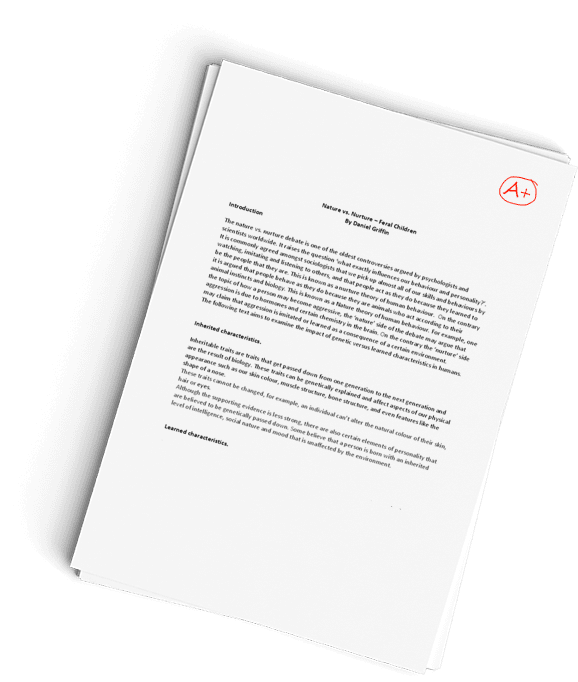WGU Ventilation Disorders & Gas Exchange Emmanuel Corticosteroid Inhaler Case Study
Question Description
Select one of the case studies below for your assignment. In your discussion, be sure to evaluate the presence and effects of alterations in the homeostatic state secondary to gender, genetic, ethnic, and temporal variables.
Case Study Assignment Requirements
- Make sure all of the topics in the case study have been addressed.
- Cite at least three references in your case study paper; this may include peer-reviewed journal articles, textbooks, or evidence-based practice websites to support the content.
- All reference sources must be within 5 years.
- Do not use sources such as Wikipedia or UpToDate as a reference.
- Assignments must have at least four full pages of analytic content, double-spaced (the cover and reference pages do not count in the page count, but must be included with the assignment), and follow APA 7th edition format.
Case Study 1: Disorders of Fluid, Electrolyte, and Acid-Base Balance
Amanda is an 18-year-old with anorexia nervosa. She was recently admitted to an eating disorders clinic with a BMI of 13.9, and although she was a voluntary patient, she was reluctant about the treatment. She was convinced that she was overweight because her clothes felt tight on her. She complained that even her hands and feet were fat. One of her nurses explained that a protein in her blood was low. The nurse further explained that, as difficult as it may be to believe, eating a normal healthy diet would make the fat hands and feet go away.
- What protein do you suspect the nurse was referring to? How would a deficiency in this protein contribute to edema?
- What is the difference between the physiology of pitting and nonpitting edema?
- Because of her weakened condition, Amanda was moved around the ward in a wheelchair when she was not on bed rest. How does this affect her edematous tissues?
Case Study 2: Respiratory Tract Infections, Neoplasms, and Childhood Disorders
Patricia was called at work by a woman at the local day care center. She told Patricia to come and pick up her son because he was not feeling well. Her son, 3½-year-old Marshall, had been feeling tired and achy when he woke up. While at daycare, his cheeks had become red, and he was warm to touch. He did not want to play with his friends, and by the time Patricia arrived, he was crying. Later that afternoon, Marshalls condition worsened. He had fever, chills, a sore throat, runny nose, and a dry hacking cough. Suspecting Marshall had influenza, Patricia wrapped him up and took him to the community health care clinic.
- Why did Marshalls presentation lead Patricia to think he had influenza and not a cold? Why is it important to medically evaluate and diagnose a potential influenza infection?
- Describe the pathophysiology of the influenza virus. Outline the properties of influenza A antigens that allow them to exert their effects in the host.
- Marshall may be at risk of contracting secondary bacterial pneumonia. Why is this so? Explain why cyanosis may be a feature associated with pneumonia.
Case Study 3: Disorders of Ventilation and Gas Exchange
Emmanuel and his mother live in an urban community housing complex. The building is worn down and dirty from the urban dust, cockroaches, and mold. Emmanuel is 5 years of age and has suffered from asthma for the last 2 years. One evening, his mother poured him some milk and put him to bed. Shortly afterward, Emmanuel woke up wheezing and coughing. As he gasped for air, he became more and more anxious. His mother ran for his inhaler, but he was too upset and restless to use it. Emmanuels skin became moist with sweat, and as he began to tire, his wheezing became quieter. His mother called 911 and waited anxiously for the ambulance to arrive.
- Emmanuel uses a corticosteroid inhaler for the management of his asthma. What is the mechanism of action of this drug? How is its action different from the ?2-agonist inhalants?
- Why does someone with severe asthma become physically fatigued during a prolonged attack? What are the physiologic events that occur during an attack?
- One of the complications of respiratory fatigue is the development of hypercapnia. How does the body compensate for an increase in CO2? What are the effects of hypercapnia on the central nervous system?
Case Study 4: Disorders of Renal Function
Fred, a fit and healthy 44-year-old, was working outside one warm summer afternoon. When he returned home by the end of the day, his lower back felt sore and he felt nauseated. His wife made him dinner, but he was not hungry and chose to go to bed instead. Freds symptoms progressed, and soon he was rolling on the bed with excruciating pain. He said his back hurt as well as his stomach and groin area. The pain would ease off only to return a short while later, and when it did, Fred would begin to sweat and run to the bathroom to vomit. His wife became concerned and started the car. When his symptoms abated, she helped him into the car and rushed him to the hospital.
- At the hospital, an abdominal radiograph showed the presence of renal calculi in Freds right ureter (urolithiasis). What is the mechanism of stone formation in the kidney? What is the role of citrate in the kidneys?
- Why would the administration of calcium supplements be useful for a patient with calcium oxalate stones?
- Hydronephrosis can be a complication of renal calculi. What is hydronephrosis? How does back pressure occur in a kidney, and what physiologic mechanism is responsible for nephron damage when back pressure is present?
Case Study 5: Disorders of Gastrointestinal Function
Marcee is a 52-year-old woman who worked at a reception desk at a company head office. She took some time off when she was treated for colorectal cancer. The Dukes classification was stage I, and the treatment protocol involved surgery and radiation therapy. No one in her family had a history of the disease. Marcee does not drink or smoke, but she does not pay close attention to her diet. At work, her meals consisted mainly of the foods she got from vending machines at the cafeteria. At home, she preferred to heat up frozen dinners or any prepackaged food that required minimal preparation time.
- Review Marcees diet. What factors in her dietary choices might contribute to the development of colorectal cancer?
- Colorectal cancer often arises from adenomatous polyps. What are the development and histologic features of these polyps?
- Colorectal cancer may be a complication in individuals with ulcerative colitis. How are the pseudopolyps seen in this disease different from the polyps discussed above?
- Why is a fecal occult blood test used as one of the screening tools for colorectal cancer? Explain the procedure for administering the test.
Have a similar assignment? "Place an order for your assignment and have exceptional work written by our team of experts, guaranteeing you A results."








